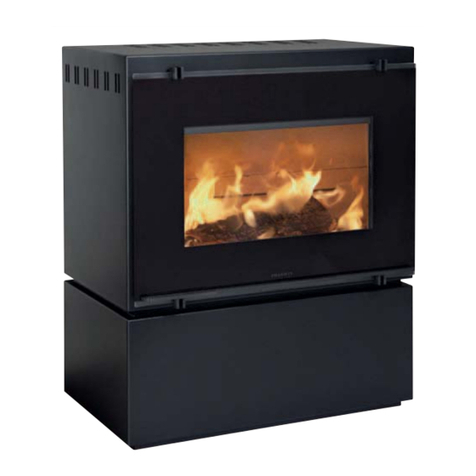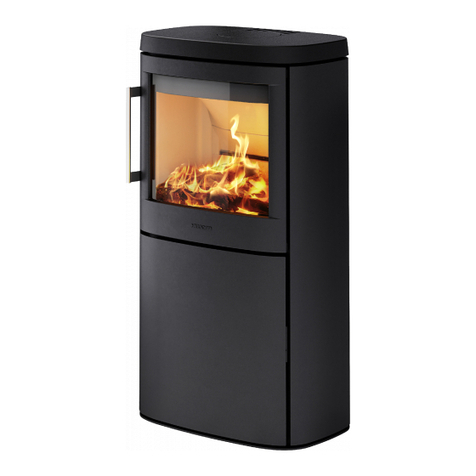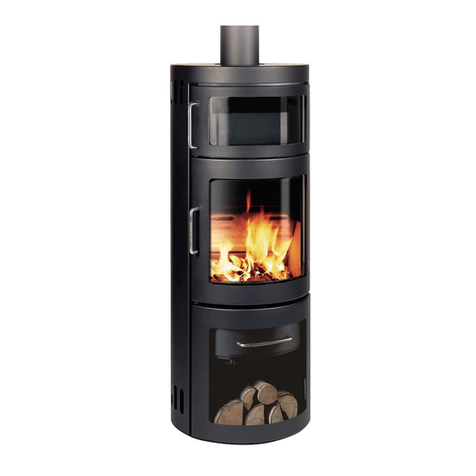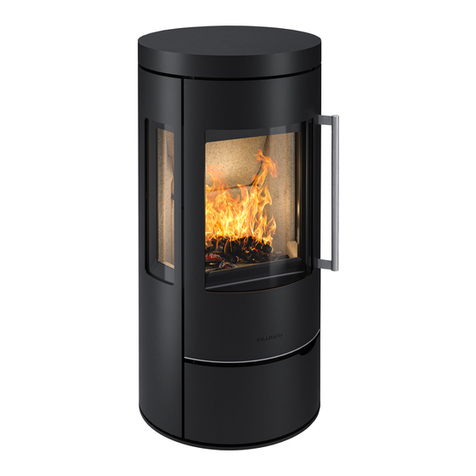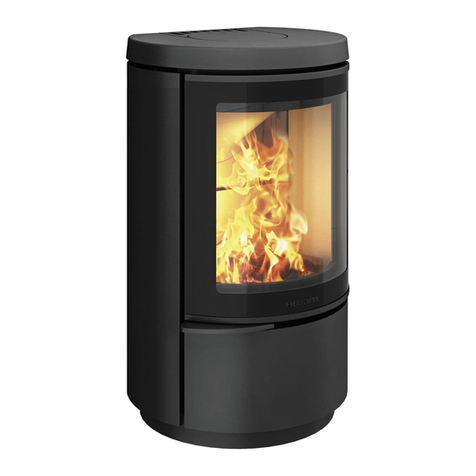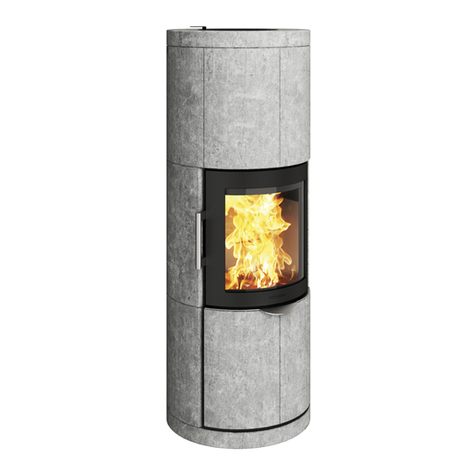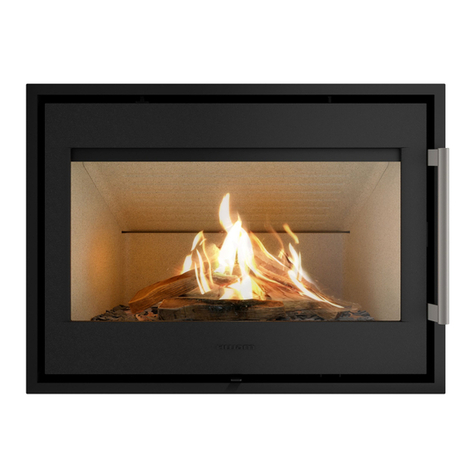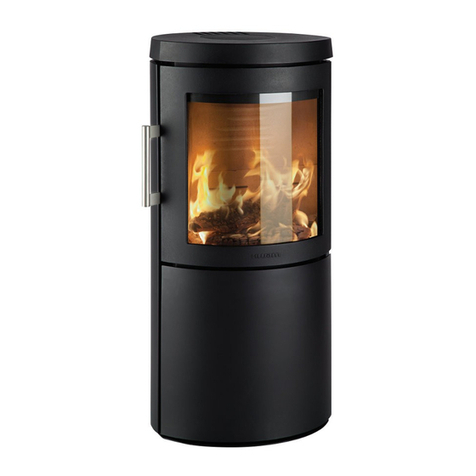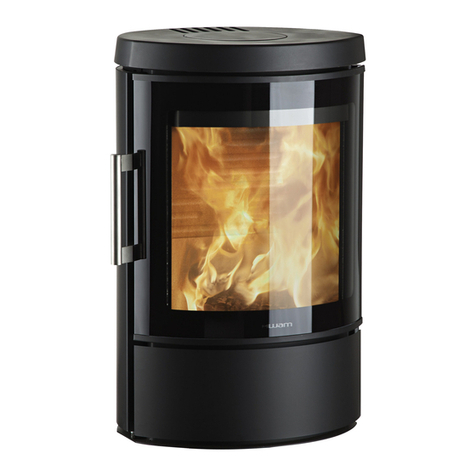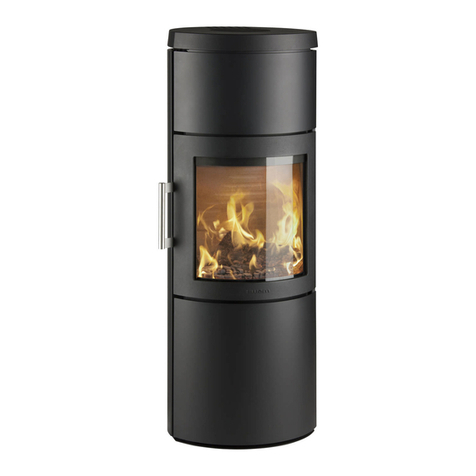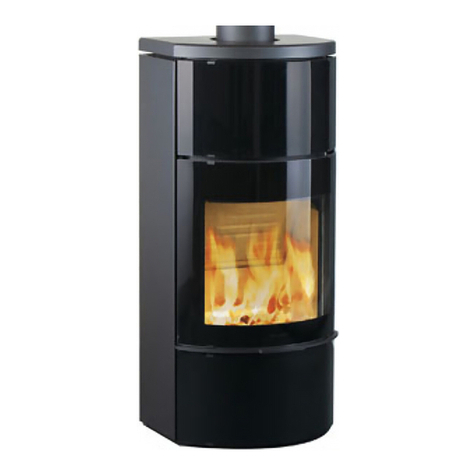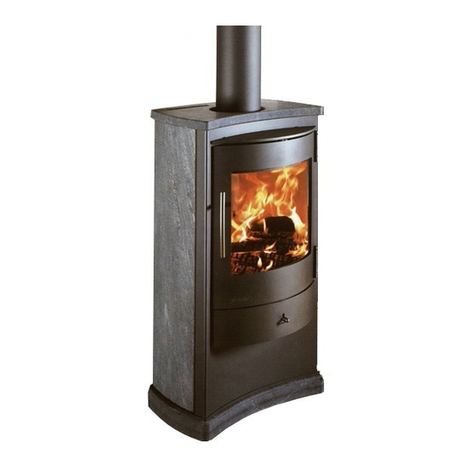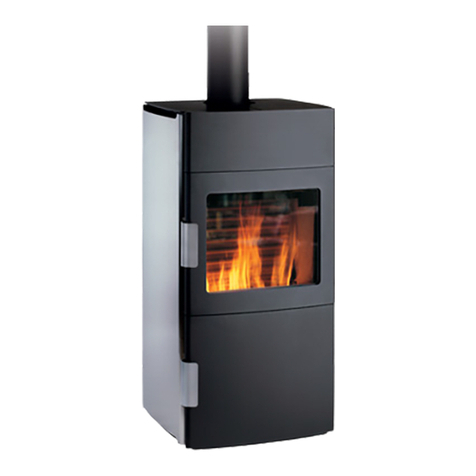IMPORTANT
Since April 2002 only Registered Competent Engineers may install solid fuel red appliances without
involving the Local Authority Building Control Department. For more details contact HETAS. Euroheat
would suggest only Registered Competent Engineers such as HETAS approved engineers install
Euroheat appliances. If a competent approved engineer is not employed to install your appliance building
control must to contacted and a building control number is issued.
The installation of this appliance must comply with all local regulations, including those referring to
national and European Standards before it can be operated. The stove is not suitable for a shared flue.
Improper adjustment, alteration, maintenance or the fitting of replacement parts not recommended by
the manufacturer can cause injury or property damage. Do not operate the stove with faulty seals or damaged
glass.
Ensure all manuals are kept safely and are available for the user at all times.
Do not store or use petrol or other flammable vapours and liquids in the vicinity of this or any other
heating appliance. Do not use aerosol sprays near the stove when the stove is alight. Do not burn anything but
natural wood or approved coals on this appliance.
Due to high operating temperatures of this appliance it should be located away from pedestrian traffic and
away from furniture and draperies. Do not store paper or wood near the appliance. Any mats and rugs put in
front of the stove should be fire proof and secured to prevent the possibility of tripping.
Advise all persons as to the stove’s high surface temperatures, including visitors. If it is possible for children
or infirm adults to come into contact with the stove, fit a suitable fire guard. Never let children “help” with the
stove in any way, even when the stove is cold. The glove supplied with the stove MUST always be worn when
opening the door handle and loading fuel onto the stove.
It is imperative that all air passageways into, out of, and within the appliance are kept clean. All permanent
ventilation into the room provided for the stove must remain clear and unobstructed at all times. Consideration
must be given to the need for extra ventilation if another heating source needing air is to be operated
simultaneously. If an extraction fan is proposed to be fitted to a connecting area of the house, after the stove
has been installed, professional advice should sought from a qualified engineer.
If a flue blockage or adverse weather conditions cause the insert to emit smoke, do not treat it as merely
a nuisance, this smoke will indicate that carbon monoxide is being emitted into the room. Properly installed,
operated and maintained this stove will not emit fumes into the dwelling. Occasional fumes from de-ashing
and re-fuelling may occur. However persistent fume emissions are potentially dangerous and must not be
tolerated. WARNING: If fume emissions persist the following immediate action should be taken:
Turn the insert to its minimum ring rate, open windows to ventilate the room and leave the premises and
allow the insert’s fuel to burn out before closing the windows. Do not re-light the insert without consulting
a qualied engineer. Your installing engineer should have tted a CO alarm in the same room as the
stove. If the alarm sounds unexpectedly, follow the instructions in the above paragraph.
In the event of a chimney fire the stove should be turned to its minimum setting and the fire brigade
informed. Do not re-light the stove until the complete installation has been inspected by a qualified engineer.
The appliance should be inspected regularly and the chimney cleaned at least annually. More frequent
cleaning may be required and the advice of a qualified chimney sweep should be sought. Always check for any
flue blockage before lighting the stove after a prolonged shut down.
This stove has been carefully designed and constructed to give clean burning with optimum efciency
and safety, but as with all stoves these standards will not be achieved unless the stove is installed and
maintained regularly by qualied engineers. It must also be operated strictly with the procedures given in
this manual.
If you are unsure about anything concerning your stove please seek professional advice.
